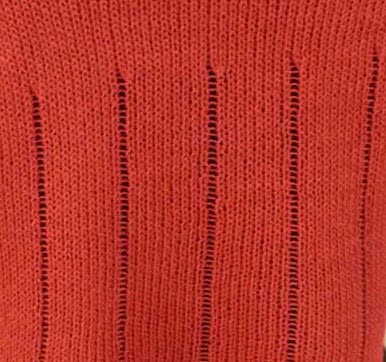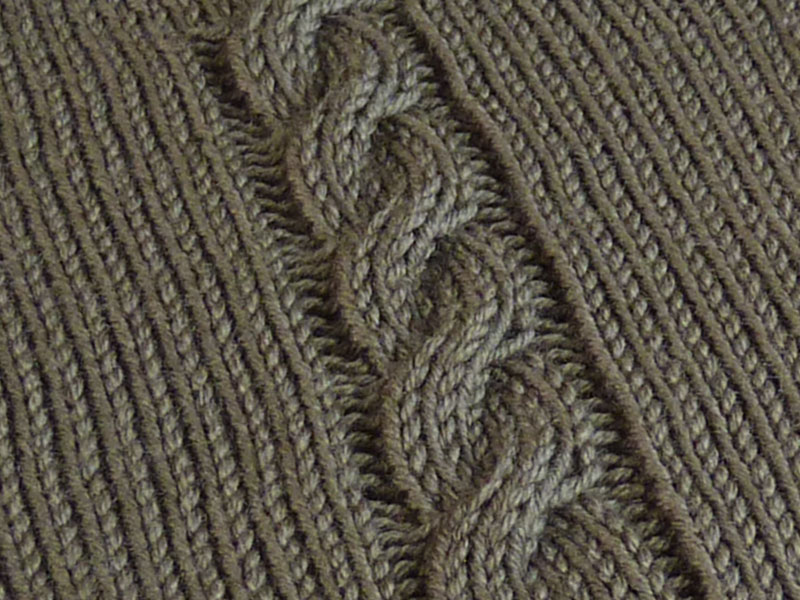Classroom: Ribbing without a Ribber
Do you hand knit?
Create knit and purl stitches by hand
Alternative to Hand Manipulation: Mock Ribbing
"Ribbing" with Tuck
Hat Inspiration
LIVE@KnititNow Replays
Ladders
What is a ladder in machine knitting?
A ladder is a column of enlarged sinker loops formed by the yarn that floats across the space between two working needles when there are one or more non-working needles between them
from Susan Guagliumi's book: Hand Manipulated Stitches for Machine Knitters
A ladder is a column of enlarged sinker loops formed by the yarn that floats across the space between two working needles when there are one or more non-working needles between them
from Susan Guagliumi's book: Hand Manipulated Stitches for Machine Knitters
By Angie Scarola (used with permission)
A Needle out of work will create a bar that is the width of one stitch; done over several rows these bars look like the rungs of a ladder. A very simple technique that I have done innumerable times and never thought very much about. I realized I had more to learn about ladders.
A Needle out of work will create a bar that is the width of one stitch; done over several rows these bars look like the rungs of a ladder. A very simple technique that I have done innumerable times and never thought very much about. I realized I had more to learn about ladders.

Needles out of work
1 Mock Ribbing
What is Mock Ribbing and why does mock ribbing work?What is distinctive about a purl stitch is the bar that lies across the fabric. The rung created by the needle out of work looks like a purl bar when viewed from the stockinette side.
Ladders can be evenly spaced to create the appearance of ribbed fabrics which is the current fashion rage. It is something easily done with a single bed machine.
Mock ribbing often is one of the first techniques most new machine knitters learn.
Mock ribbing ribbing uses less yarn than standard ribbing but retains much of the stretch that regular ribbing has.
This technique is not limited to the home machine knitter but is frequently used by sock manufacturers.


Mock Ribbing
2 Cables
Ladders (needles out of work) can also be used in small amounts.A purl stitch is often used on each side of a cable to make the cable more pronounced; a needle out of work on each side of the cable performs the same function and visually looks the same as a real purl stitch.

3 Decorative Accents
Another use for a needle out of work is to create a ladder through which various cords, ribbons, or other decorative items can be woven. Ladders can start and stop after several rows and restart elsewhere.
4 More uses for ladders
- Use them to make cutting lines for steeks or other cut 'n sew projects.
- A needle out of work just inside the selvedges can be used to crochet pieces together.
- When lifting and rehanging stitches, ladders are easier to count than rows and usually get hidden in the fold caused by the lifting of the stitch.
- Using ladders as a turning row (or a fold line) was new to me. Vertical Bands
- Lace a cord on a hat brim that gets tightened to head size. This is a fun and easy hat that is very flattering.

NOW turning column for a vertical band
5 Every other needle
There is one instance where every other needle is used that has nothing to do with ladders. That is when the yarn is too heavy to run every needle on the machine. (the yarn still needs to fit in the hooks of the needles)Once the piece is off the machine and is tubed (pulled lengthwise), the ladders between the stitches are pulled into the stitch to make the fabric appear normal.

Every other needle (EON)
The many variations possible using ladders will be a great way to expand your knitting horizons!
I especially recommend that you take the time to read the ladder section of Susan Guagliumi's book:
Hand Manipulated Stitches for Machine Knitters
The book offers a fascinating variety of stitches made by lifting and rehanging the ladders. Whether you knit with two needles or many needles, I hope that you take the time to at least investigate ladders to see if they will fit into your next project.
- Mock Ribbing
- Cables
- Decorative Accents
- More uses for Ladders
- Every Other Needle
The book offers a fascinating variety of stitches made by lifting and rehanging the ladders. Whether you knit with two needles or many needles, I hope that you take the time to at least investigate ladders to see if they will fit into your next project.
